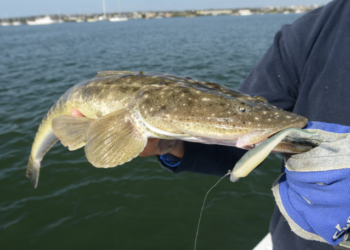
ANYONE who owns a trailer boat has probably experienced the dreaded boat ramp hog. The bloke who rocks up with his boat, takes up all the lanes on the ramp, then proceeds to load gear aboard, untie straps, motor supports – all at a snail’s pace while those in the swelling queue are seeing red.
If you’ve spent much of your week in city traffic this sort of selfishness can be very frustrating. While this person is getting between you and the water, take a deep breath. It may be his or her first ever ramp launch. As an experienced boatie, you know it takes time to pick up new and easier ways of doing things. While what follows may not be anything new, in the interest of everyone at our ramps getting along, these simple steps might help get more trailer boats in the water with the minimum of fuss.
1. Take your turn in the queue. The next time someone pushes in front of you at a ramp won’t be the last. Politely let them know you were next in line and waiting your turn. If they get disrespectful or aggressive, just let them go, avoid the hassle. Anyway, in their rush they may have forgotten to screw bungs in…a good time to make sure yours are.
2. While in the queue or in a marked preparation area is the time to start removing things like tie-down straps and motor supports and putting fishing gear and the like on board – not on the ramp, holding everyone up. If you’re taking longer than someone else in line to get ready, courteously wave them through. It’s good for general goodwill with your fellow boaters and keeps the line moving, preventing long holdups later on.
3. If you’re launching in the dark try not to blind others on the ramp with your new 200 w mega-spotlights that can fry a seagull at 100 m. Everyone needs to see what they’re doing in low light, but there are limits.
4. When taking your turn on a multi-lane ramp try to only take up a single lane. Nothing annoys everyone else waiting more than someone who’s jack-knifed their trailer across two lanes and couldn’t be bothered straightening up to allow anyone else in.
5. If you’re not great at reversing a trailer, take some time to practice before you try a ramp launch. Learn to use your car’s side mirrors rather than turning your head to see where you’re going. Once you get used to seeing your trailer wheels appear and disappear in your mirrors as you turn the steering wheel it’ll become second nature. If you’ve got a reversing camera that can make things even easier.
6. Learn to know how far your trailer and boat need to be backed into the water for an easy launch. This will depend on the individual boat and hull type and once you’ve worked it out you’ll be set for next time.
7. Depending on your boat trailer’s winch and safety chain set-up, you can generally disconnect the winch cable or strap first. Ensure someone has hold of a bowline before undoing the safety chain and launching the boat. As someone who has successfully launched a boat without anyone on the bowline, I know an early morning swim isn’t always appreciated, especially in winter. Note: If you’ve ever had difficulty undoing the shackle on the safety chain make sure you have a shifter or pliers on hand and regularly coat the shackle with anti-corrosion lubricant.
8. Depending on where you launch, sometimes it’s quicker or necessary to drive your boat off or on its trailer (if legal). Some areas experience strong tidal surges that make it impossible to safely launch solely by hand. While this can be done solo, make sure if you’re driving your boat off the trailer that you can easily and safely tie off the boat to move your car from the ramp in reasonable time. Don’t rush, the next boat and trailer that takes a swim at a boat ramp won’t be the last!
9. Park your car and trailer in a designated parking area (if one exists), making sure it takes up the minimum space required and doesn’t hinder the safe manouevrability of other ramp users.
10. Getting your boat back on the trailer is basically most of the above, done in reverse. If you drive your boat onto the trailer, which may be illegal at some locations, firstly ensure there’s no one in the water in close proximity. Take your time, approach the trailer as slowly as possible, allowing for any prevailing wind or current. Ensure the engine is trimmed up to avoid propeller damage, and be aware that steering is affected by high trim angles and is vague at best.
Hopefully these steps may help get your boat on the water quickly and safely. Remember, if you see someone having difficulty, try and help them out. They might also do the same for you one day.



















